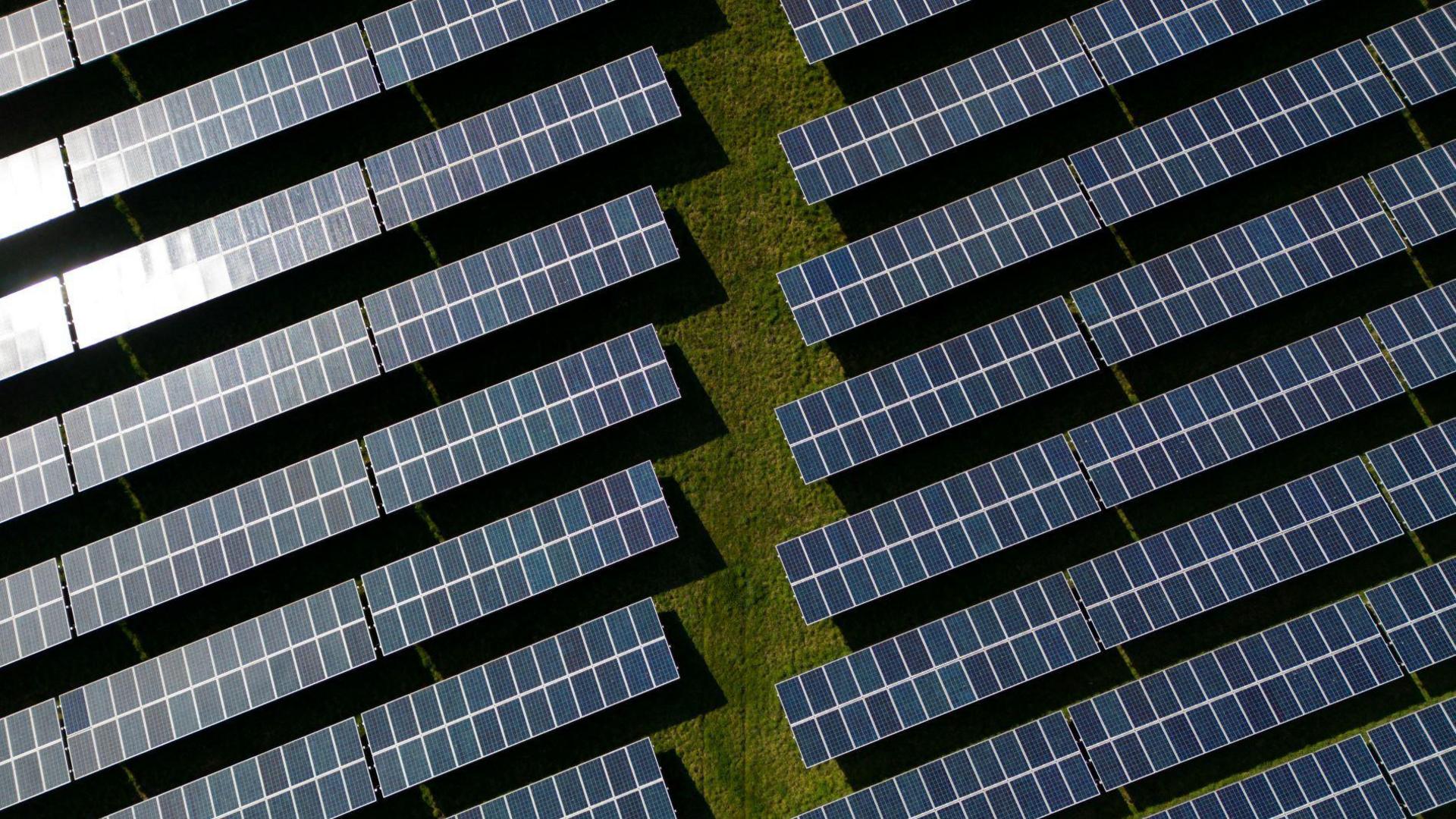Protest over plans for 3,500-acre solar farm site
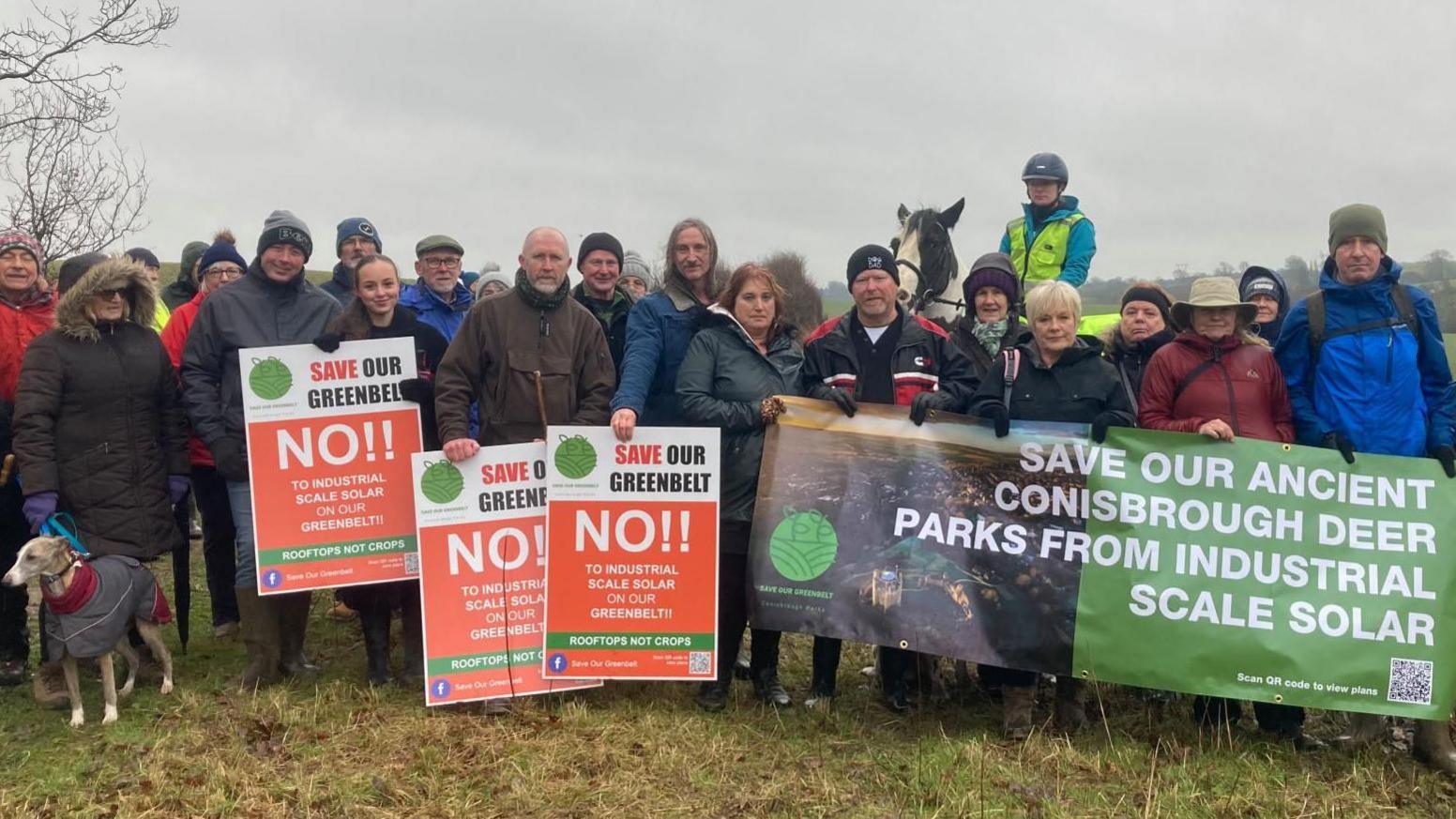
Campaigners said the proposed solar farm site was of historic significance
- Published
Campaigners have staged a protest over plans for a large solar farm planned for green belt land between Rotherham and Doncaster.
The project, named Whitestone Solar Farm, would stretch across a number of separate parcels of land and could power 250,000 homes.
But some residents who have objected to the scheme said the land is of "historical and archaeological significance".
A spokesperson for Whitestone said: "We want to make the biggest possible contribution to the country's energy needs while designing a project that is sensitive to the local environment."
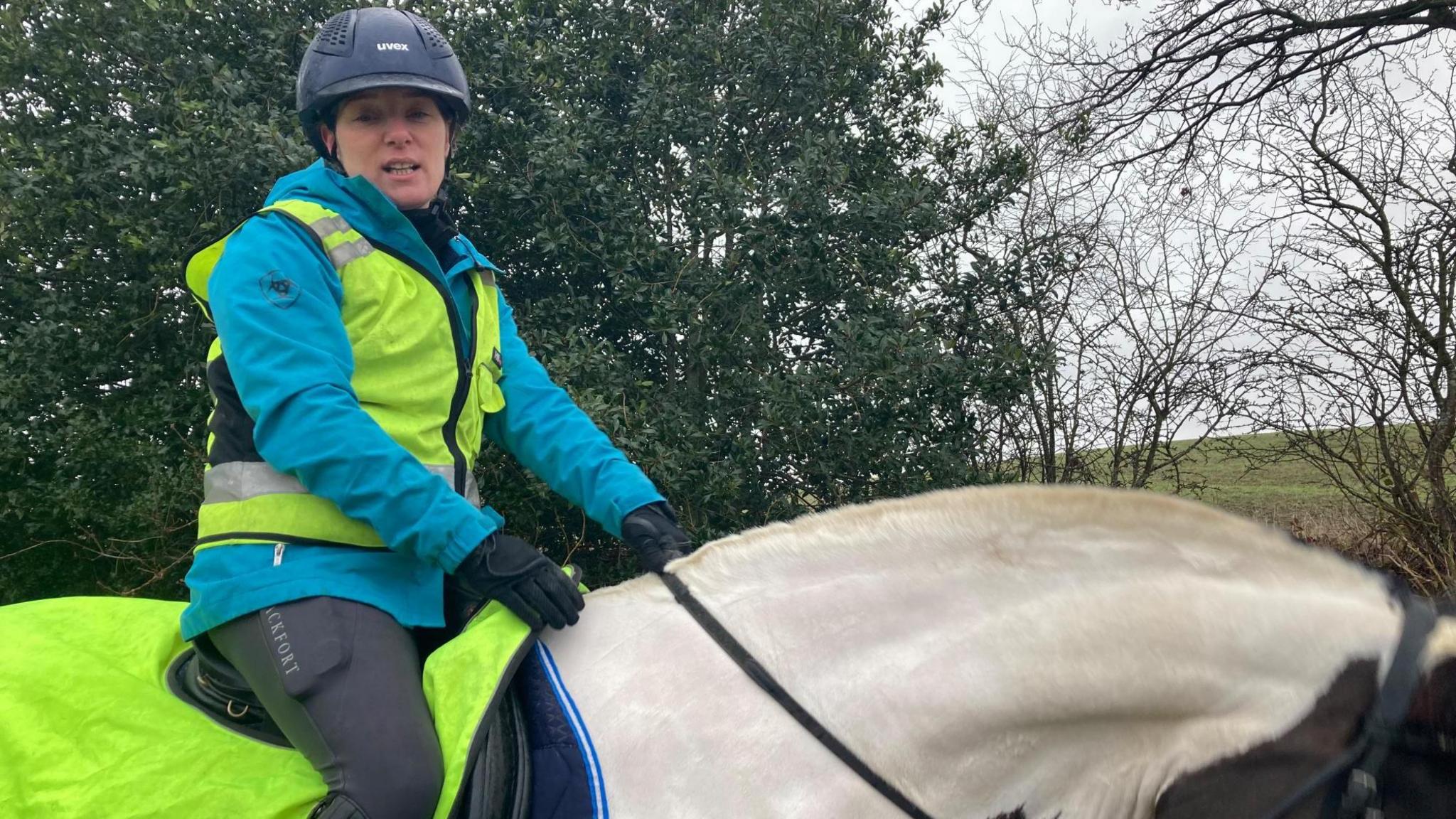
Jennifer Gaimster said horse riders relied on paths through the proposed development site
The proposed land for the solar farm includes farmland near the M18, south of Bramley and Wickersley, as well as large fields on both sides of the M1, south of its junction with the M18.
The project also includes plans for areas around Ulley, Aston and Brampton.
Developers said the sites had been selected due to their proximity to Brinsworth substation, which would connect the solar farm to the national grid.
A group of protestors gathered on farmland North of Ravenfield on Thursday to express their objections to the plan, which have been brought forward by Green Nation.
Billy Collins, a 74-year old retired tenant farmer, has lived in the area all his life.
He said he felt the developers "don't just want a little bit, they want all of it".
"This is a historic site. It's the old hunting ground for Conisbrough Castle," he said.
"It will be a sea of solar panels."
Jennifer Gaimster, from Rotherham, has represented her country for horse riding and trains on bridle paths in the area.
"There is a horse riding community here," she said.
"We rely on these paths."
"People come here for a countryside walk, you want to see greenery, not just black glass."
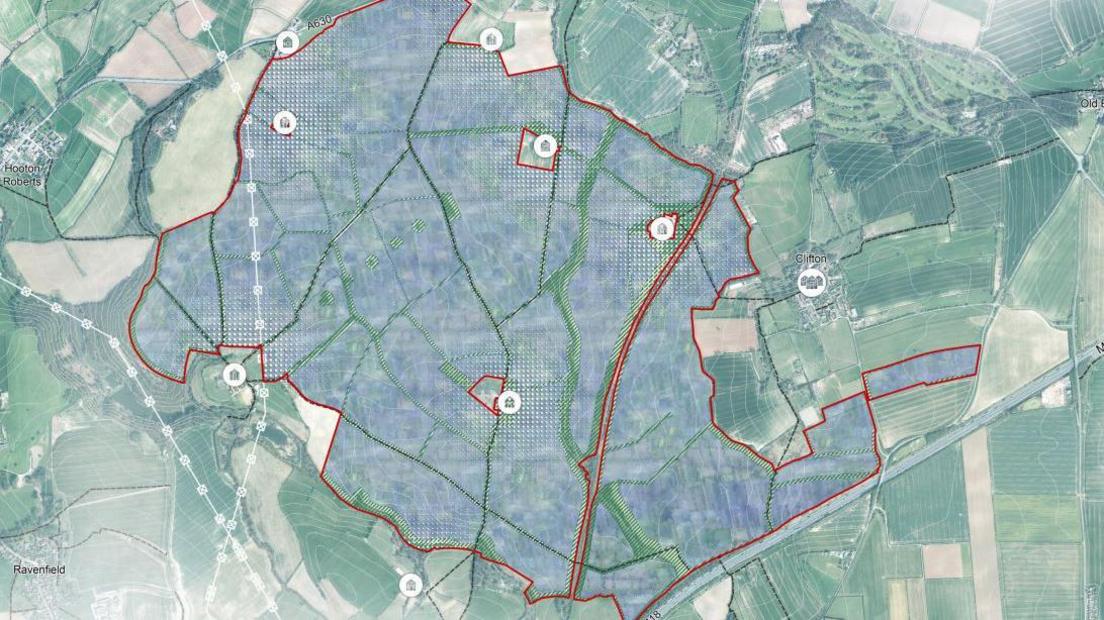
A further consultation will be held on the plans
Jo Ferris is a community archaeologist who has helped excavate a kiln site at Firsby Hall Farm, which lies within the proposed solar farm site.
She said she had found pottery on the land from the 13th Century.
"The whole area is of archaeological significance," she said.
"Yes, we need green energy but this is hugely important land."
Whitestone is classed as a Nationally Significant Infrastructure Project because of the amount of power the scheme could generate.
A decision on whether the project can go ahead will therefore be made by the government, following a second round of consultation and an application for a development consent order.
An initial consultation on the plans has been extended to 31 January.
A spokesperson for Whitestone said not all of the 3,500-acre site would be used for solar panels.
"There will also be areas for environmental enhancement, to protect existing local wildlife and enhance biodiversity, as well as buffers around homes, public rights of way and other important spaces," they said.
"The project is in a very early stage of development, so we do not know exactly what those buffers will be yet - we will consult with the community and environmental experts to help design them sensitively."
They said the company would "look carefully at potential environmental impacts, including heritage, archaeology and bridleways, as we develop our plans".
Listen to highlights from South Yorkshire on BBC Sounds, catch up with the latest episode of Look North or tell us a story you think we should be covering here, external.
Related topics
- Published6 October 2024
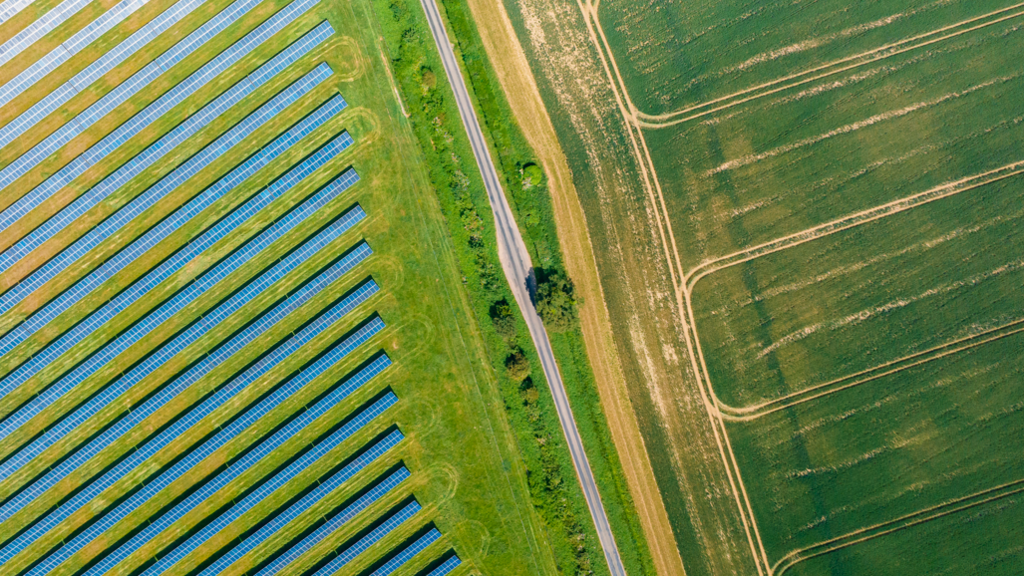
- Published23 January
